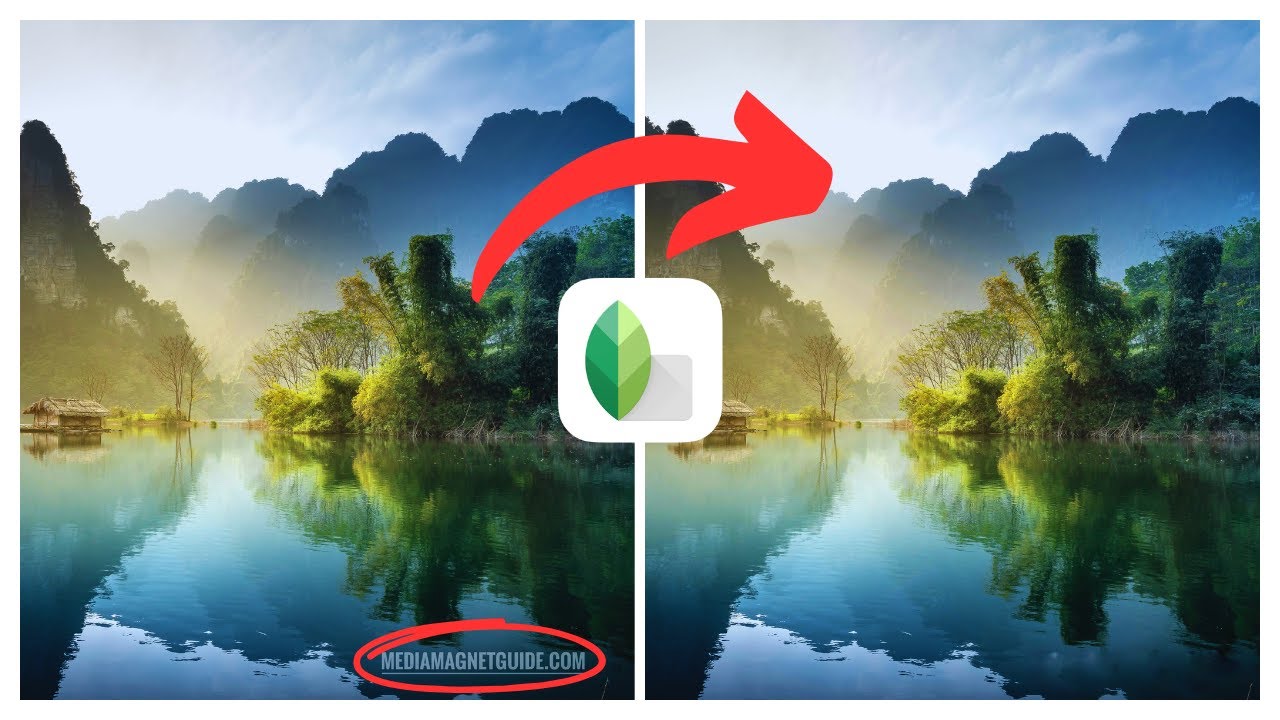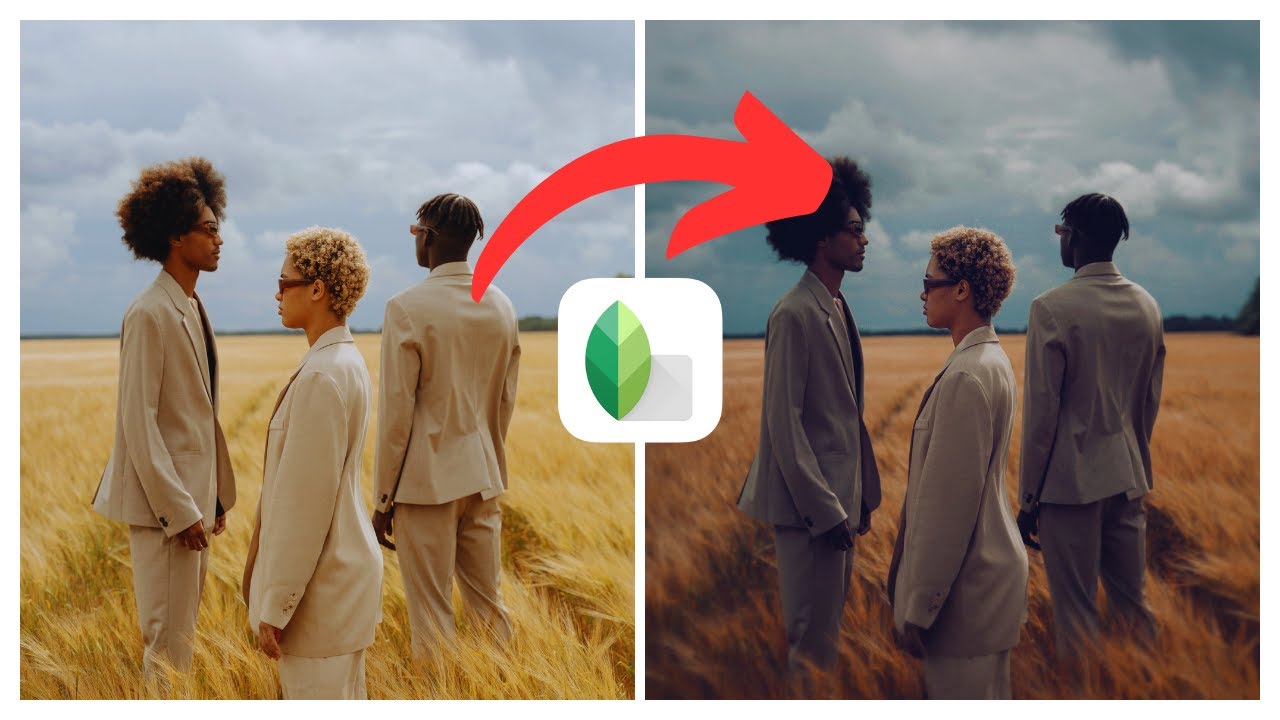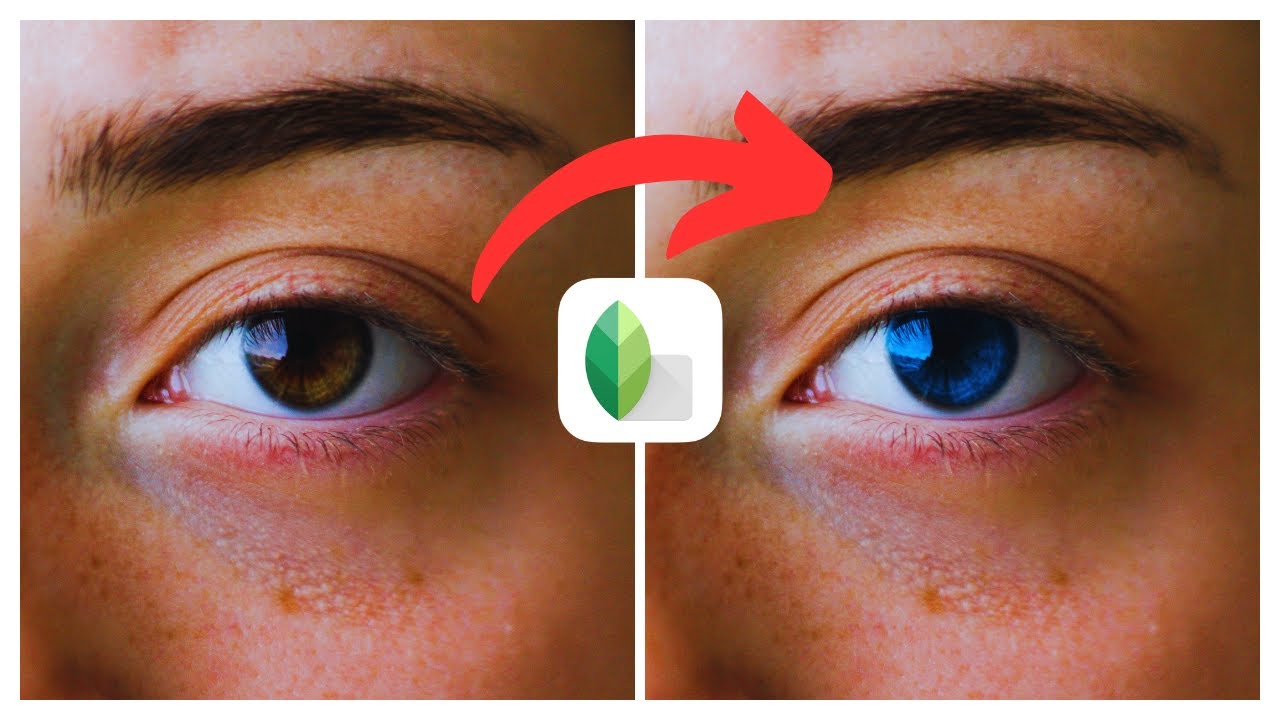In the article titled “How to Make White Background in Snapseed | (iOS & Android),” you will learn how to create a clean white background for your photos using Snapseed on both iOS and Android devices. This tutorial, presented by Media Magnet Guide, aims to enhance the overall aesthetics of your images. By following the step-by-step instructions provided, you can easily achieve a professional-quality white background for your photos, elevating your photography game. The article also highlights the features and capabilities of Snapseed, a powerful and user-friendly photo editing app developed by Google. From simple adjustments to advanced editing techniques, this app offers creative freedom for anyone looking to enhance and transform their photos. If you are interested in learning more about Snapseed and other photo editing tutorials, make sure to watch more Snapseed tutorials on the website and drop any questions or video requests in the comments section. Your support by liking, subscribing, and commenting on the video is greatly appreciated, as it motivates the creators to continue providing valuable content to the viewers.
Understanding the Snapseed App
Brief overview of the Snapseed app
Snapseed is a powerful and user-friendly photo editing app developed by Google. With its wide range of editing tools and filters, Snapseed allows users to enhance and transform their photos with ease. Whether you’re a beginner or an advanced photographer, Snapseed offers creative freedom and the ability to level up your photography game.
Key functionalities of Snapseed
Snapseed offers a plethora of editing features to help you create stunning images. Some of the key functionalities include the ability to tune images, adjust perspectives, add creative filters, crop and rotate photos, and remove unwanted objects or distractions. The app also provides advanced editing tools such as curves, selective adjustments, and healing brush, allowing you to have full control over the editing process.
Snapseed’s unique features
One of the standout features of Snapseed is its intuitive and user-friendly interface. The app makes it easy to navigate through various editing tools and adjustments, ensuring a seamless editing experience. Snapseed also offers a wide variety of filters and presets, allowing you to instantly transform the look and feel of your photos. Additionally, the app provides non-destructive editing, meaning you can easily revert back to the original image if needed.
Why Create a White Background?
Enhancing image aesthetics with a white background
A white background can significantly enhance the aesthetics of an image and make it look more professional and clean. By removing distractions and focusing solely on the subject, a white background creates a visual impact that allows the subject to stand out. Whether you’re capturing product photos, portraits, or still life images, a white background can elevate the overall look and make your photos more visually appealing.
Importance of a clean background in photography
In photography, the background plays a crucial role in determining the overall composition and impact of an image. A clean background ensures that the viewer’s attention is solely on the subject, without any distractions or clutter. It helps create a sense of focus and professionalism, making the subject of the photo the main point of interest.
Situations where white backgrounds are beneficial
White backgrounds are particularly beneficial in various situations. For product photography, a white background helps highlight the details and colors of the product, making it more visually appealing to potential buyers. In portrait photography, a white background can create a classic and timeless look, allowing the subject’s features and expression to take center stage. Additionally, white backgrounds work well for still life photography, architectural shots, and fashion photography, among other genres.
Preparation before Using Snapseed
Requirements for using Snapseed
Snapseed is available for both iOS and Android devices, making it accessible to a wide range of users. To use Snapseed, you will need a compatible smartphone or tablet with sufficient storage space to download and install the app. It is also recommended to have a reliable internet connection for seamless usage and to ensure you have access to the latest app updates and features.
Downloading and installing Snapseed
To download and install Snapseed, follow these steps:
- Open the App Store or Google Play Store on your device.
- Search for “Snapseed” in the search bar.
- Select the Snapseed app from the search results.
- Tap on the “Install” or “Get” button to start the download and installation process.
- Wait for the app to finish installing on your device.
- Once installed, you can find the Snapseed app icon on your device’s home screen or in the app drawer.
Understanding Interface of Snapseed prior use
Before diving into the process of creating a white background in Snapseed, it is essential to familiarize yourself with the app’s interface. Snapseed provides a clean and user-friendly interface, making it easy to navigate through various tools and options. Upon opening the app, you will be presented with options to either open a photo from your device’s gallery or take a new photo using the camera. Once you have selected an image, you will see a toolbar at the bottom of the screen that contains all the editing tools and options available in Snapseed.

Creating a White Background on Snapseed: Step-by-Step Guide
Step 1: Opening the image in the Snapseed app
- Open the Snapseed app on your device.
- Tap on the “Open” button or the icon that allows you to select an image from your device’s gallery.
- Navigate to the location where your desired image is stored and select it.
Step 2: Selecting the necessary tools for background editing
- Once you have opened the image, tap on the “Tools” icon located at the bottom of the screen.
- From the list of available tools, select the “Brush” tool.
- In the brush tool menu, tap on the “Selective” option.
Step 3: Applying and adjusting the white background
- With the brush tool activated, start brushing over the areas of the image that you want to turn into a white background.
- Adjust the brush size using the slider provided to ensure precision and accuracy while brushing.
- Use your fingers to zoom in and out of the image for better control and visibility.
- Once you have finished brushing over the desired areas, proceed to the next step.
Navigating the Tools Menu
Understanding the Tools in Snapseed
Snapseed offers a wide range of tools and options to enhance and edit your photos. Some of the key tools include “Tune Image,” “Details,” “Crop,” “Rotate,” “Perspective,” “Healing,” “Selective,” “Brush,” and “White Balance.” Each tool serves a specific purpose and provides unique adjustments and effects to enhance your images.
Using the ‘Whiten’ tool
Snapseed provides a dedicated “Whiten” tool that allows you to specifically target and whiten areas of your image. This tool is particularly useful for creating a white background or eliminating unwanted shadows and discoloration. To use the “Whiten” tool, follow these steps:
- Open Snapseed and select the image you want to edit.
- Tap on the “Tools” icon located at the bottom of the screen.
- From the list of tools, select the “Whiten” tool.
- Adjust the brush size using the slider provided.
- Brush over the areas you want to whiten, such as the background, until you achieve the desired effect.
How to effectively use ‘Brush’ tool
The “Brush” tool in Snapseed allows for precise adjustments and editing. To effectively use the “Brush” tool, follow these tips:
- Use a small brush size for fine details and intricate areas.
- Adjust the brush opacity to control the intensity of the effect.
- Take advantage of the zoom feature to ensure accuracy and precision while brushing.
- Experiment with different brush strokes and techniques to achieve the desired result.
- Use the eraser tool to remove any unintended brush strokes or to create intricate edits.
Adjusting the White Balance for a Perfect Background
Understanding white balance
White balance is a fundamental concept in photography that refers to the color temperature of an image. It determines how white, neutral, or warm the colors appear in the photo. Adjusting the white balance is crucial for achieving a perfect white background as it ensures that the background appears pure white without any unwanted color tints or casts.
How to adjust white balance in Snapseed
To adjust the white balance in Snapseed, follow these steps:
- Open the Snapseed app and select the image you want to edit.
- Tap on the “Tools” icon located at the bottom of the screen.
- From the list of tools, select the “White Balance” tool.
- Use the slider provided to adjust the temperature and tint of the image.
- Make small adjustments and observe the changes in real-time to achieve the desired white balance.
Achieving a perfect white background with white balance control
To achieve a perfect white background with white balance control, follow these tips:
- Start by adjusting the temperature slider to make the image appear warmer or cooler.
- Fine-tune the white balance by adjusting the tint slider to eliminate any unwanted color casts.
- Keep making small adjustments until the background appears pure white without any noticeable color tints or casts.
- Pay attention to the overall image and make additional adjustments if necessary to maintain the visual balance and harmony.
Enhancing the Photo: Using Snapseed’s Editing Features
Overview of editing features in Snapseed
Snapseed provides a wide range of editing features to enhance your photos. These features include tuning the image, adjusting brightness, contrast, saturation, and ambiance, applying creative filters, sharpening details, and selectively adjusting specific areas of the photo. These editing features allow you to unleash your creativity and transform your images to match your vision and style.
Using ‘Tune Image’ for photo enhancement
The “Tune Image” feature in Snapseed allows for comprehensive photo enhancement. With this feature, you can adjust brightness, contrast, saturation, shadows, highlights, and other essential parameters to fine-tune the overall look and feel of your image. To use the “Tune Image” feature, follow these steps:
- Open Snapseed and select the image you want to edit.
- Tap on the “Tools” icon located at the bottom of the screen.
- From the list of tools, select the “Tune Image” tool.
- Adjust the various parameters such as brightness, contrast, saturation, etc., using the respective sliders.
- Make subtle adjustments and regularly review the changes to achieve the desired photo enhancement.
Understanding the use of ‘Details’ in image enhancement
The “Details” feature in Snapseed allows for precise adjustments and enhancements to the fine details of your image. This feature helps sharpen the image, enhance textures, and bring out intricate details. To use the “Details” feature, follow these steps:
- Open Snapseed and select the image you want to edit.
- Tap on the “Tools” icon located at the bottom of the screen.
- From the list of tools, select the “Details” tool.
- Adjust the “Sharpening” and “Structure” sliders to enhance the details and textures in the image.
- Make subtle adjustments and regularly review the changes to achieve the desired image enhancement.
Tips for a Smooth White Background Editing
Avoiding common mistakes during white background editing
When editing for a white background, it’s essential to avoid common mistakes that can affect the overall quality and appearance of the image. Some of these mistakes include:
- Over-bleaching the background, causing loss of detail and a washed-out look.
- Uneven brushing, resulting in an inconsistent white background.
- Ignoring the subject and focusing only on the background, which can lead to improper exposure and balance.
Tips for getting a smooth, clean white background
To ensure a smooth and clean white background, follow these tips:
- Start with a well-lit and evenly lit setup to minimize unwanted shadows and ensure proper exposure.
- Brush the background gently and evenly, paying attention to details and making sure to cover the entire background area.
- Use a small brush size for precise control and to avoid bleeding into other areas of the image.
- Take breaks and step back to observe the image from a distance, ensuring that the white background appears even and consistent.
- Make subtle adjustments to the exposure and brightness to ensure the subject remains well-exposed and balanced against the white background.
Solutions to potential problems during editing
While editing for a white background, you may encounter some common problems. Here are some solutions to address these issues:
- If the background appears gray or off-white, increase the exposure or brightness slightly to achieve a pure white look.
- If there are unwanted shadows or reflections on the background, consider adjusting the lighting setup or using additional light sources to minimize these issues.
- If the subject appears discolored or unnatural against the white background, adjust the white balance or use selective adjustments to ensure proper color balance.
Converting Edited Photo into Required Format
How to save edited photos in Snapseed
To save your edited photos in Snapseed, follow these steps:
- After applying all the desired edits and adjustments, tap on the “Export” icon located at the top right corner of the screen.
- Select the desired image format, such as JPEG or PNG.
- Choose the image quality and size options based on your preferences.
- Tap on the “Save” button to save the edited photo to your device’s gallery.
Exporting the edited photo to the desired location
Once you have saved the edited photo to your device’s gallery, you can easily export it to your desired location such as cloud storage, social media platforms, or email. To export the photo, follow these steps:
- Locate the edited photo in your device’s gallery.
- Tap on the “Share” or “Export” icon, usually displayed as an arrow pointing upwards or as three dots connected by lines.
- Select the platform or location where you want to export the photo.
- Follow the on-screen prompts to complete the exporting process.
Changing photo format if required
If you need to change the photo format of your edited image, you can use various image conversion tools or apps available online. These tools allow you to convert your photo from one format to another while maintaining the desired quality and resolution. Simply upload your edited photo to the tool or app, select the desired output format, and initiate the conversion process. Once the conversion is complete, you can download the photo in the new format and save it accordingly.
Conclusion
Recap of creating a white background in Snapseed
Creating a white background in Snapseed is a quick and straightforward process that can greatly enhance the aesthetics and professionalism of your photos. By following the step-by-step guide and utilizing the various editing features and tools, you can effortlessly achieve a clean and visually appealing white background.
Acknowledging the flexibility and utility of Snapseed
Snapseed’s powerful editing capabilities and user-friendly interface make it an essential tool for photographers of all levels. With its extensive range of features, Snapseed allows users to transform their photos, enhance details, adjust white balance, and create stunning white backgrounds.
Encouraging continued learning and experimentation with Snapseed
Snapseed offers a wealth of creative possibilities, and the best way to fully utilize its potential is through continued learning and experimentation. By exploring the app’s features, trying new editing techniques, and pushing your creative boundaries, you can enhance your photography skills and create captivating images. Embrace the flexibility of Snapseed and let your creativity soar.


























